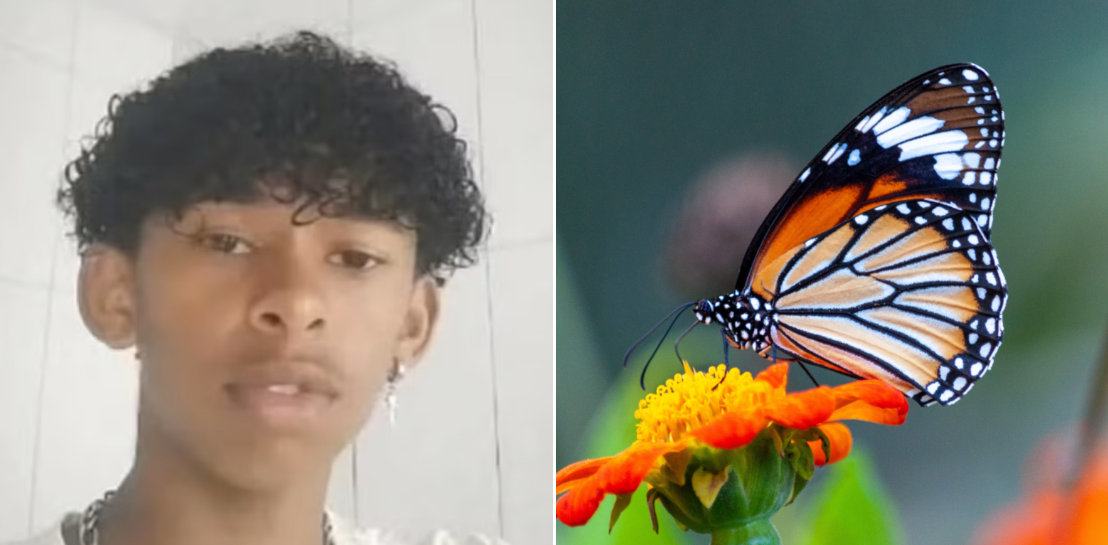Teen Dies After Butterfly Injection in a Risky Experiment

© Social Media / wirestock / Freepik
Can a teen die after butterfly injection from toxins alone? Why do some teens take big risks without thinking about the danger?
In a quiet town in Brazil, a 14-year-old boy’s life took a shocking turn.
What started as a normal day ended in a hospital room, leaving a family heartbroken and a community asking questions.
This story isn’t just about a boy—it’s about a strange decision that led to a terrible outcome. What could drive someone so young to do something so risky?
Let’s dive into the details of this sad event and explore what happened.
Davi Nunes Moreira, a teenager from Planalto, Brazil, caught the world’s attention in February 2025.
Reports say he mixed a dead butterfly with water and injected it into his leg using a syringe. At first, he told his father he’d hurt himself while playing.
But as he started vomiting and struggling to walk, the truth came out.
Davi admitted to medics what he’d done, and soon after, his condition got worse. He spent seven painful days in a hospital in Vitória da Conquista before passing away.
What Happened to Davi?
What do we know about how this teen died after a butterfly injection?

Davi’s troubles began when he decided to try something unusual. After mixing the butterfly remains with water, he used a syringe—later found under his pillow by his father—to inject the liquid into his leg.
At first, he hid the real reason for his pain, but as his symptoms grew severe, he confessed. Doctors rushed him to a bigger hospital, but despite their efforts, he couldn’t be saved.
Experts think the butterfly mixture might have caused a serious reaction in his body, like an infection or a blockage in his blood vessels. Police are still waiting for test results to confirm what killed him.
Some reports suggest Davi’s actions might be tied to a dangerous online trend. In South America, there’s talk of a social media challenge where young people inject butterfly remains.
However, Davi denied this before he died, and not all sources agree it was part of a challenge. Whether it was a dare or just a curious experiment, the result was the same: a young life lost too soon.
The Dangers of Butterfly Toxins

Butterflies might look harmless, but they can carry risks. Experts like Professor Marcelo Duarte from São Paulo University say we don’t fully understand what’s in a butterfly’s body.
Some, like the Monarch butterfly, eat toxic plants as caterpillars and store those poisons. Normally, these toxins keep predators away and aren’t a big threat to humans.
But injecting them? That’s a different story. Doctors believe Davi’s body might have shut down from septic shock—a deadly condition where an infection overwhelms the system.
It’s a reminder that even small creatures can be dangerous in unexpected ways.
Why Do Teens Take Risks Like This?

Davi’s story isn’t the first time a young person has faced harm from a risky idea. Social media is full of challenges that push people to try wild things for attention or fun.
From eating strange items to daring stunts, these trends can spread fast online. Even if Davi wasn’t part of a challenge, his choice shows how curiosity or pressure can lead to tragedy.
Parents, schools, and communities are now asking how to keep kids safe from these dangers. It’s a tough question with no easy answer, but it’s one worth thinking about.
This heartbreaking event has sparked conversations worldwide. Police in Brazil are still investigating, and Davi’s family is left grieving.
Why Do Teens Take Risks? Neuroscience Explains

Teens like Davi often make choices that seem wild or dangerous to adults. But there’s a reason behind it, and it starts in the brain.
Scientists who study the brain—called neuroscientists—say that a teenager’s mind works differently than an adult’s. Two key parts of the brain play a big role: the prefrontal cortex and the amygdala.
The prefrontal cortex is like the brain’s control center. It helps us think ahead, make smart decisions, and control impulses.
In teens, this part isn’t fully grown yet—it keeps developing into your 20s. That means teens might not always stop to think, “Is this safe?” before acting.
On the other hand, the amygdala, which handles emotions like excitement or fear, is super active in teens. It makes them crave thrills and feel big rewards from taking risks, like the rush of trying something new or daring.
When Davi injected the butterfly mixture, his brain might have been chasing that thrill. Neuroscience says teens are wired to seek out fun and excitement, even if it’s risky.
Social media adds to this. Seeing others do bold things online can make a teen’s amygdala light up, pushing them to join in.
At the same time, their still-growing prefrontal cortex might not kick in to say, “Wait, this could hurt me.”
It’s not that teens don’t know risks exist—they just weigh them differently. The promise of fun or attention can feel more important than the chance of danger.
Understanding this can help parents and teachers guide teens better. Talking about risks in a way that clicks with their emotions, not just logic, might make a difference.
Davi’s story shows how this brain setup, mixed with curiosity or pressure, can lead to choices no one expects.
You might also want to read: What Is the Butterfly Effect Theory and How Does It Even Work?


